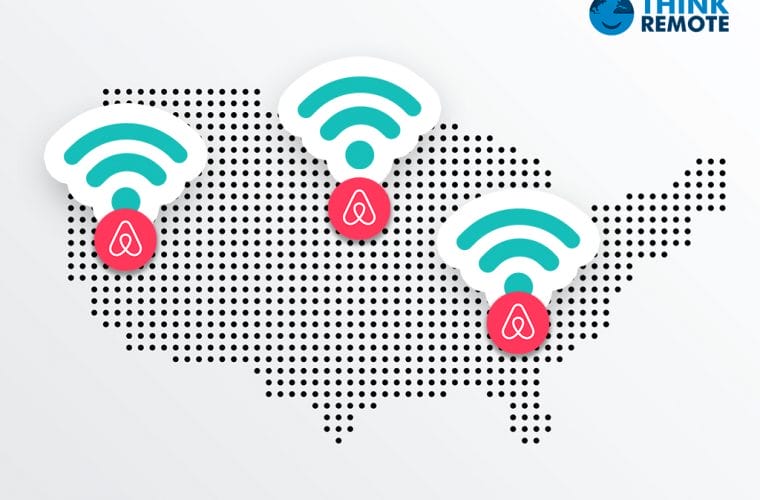

Dealing with unreliable Wi-Fi at remote travel destinations is a common frustration, impacting everything from work to relaxation. Imagine planning that perfect remote work retreat, only to find yourself struggling to connect or maintain a stable internet connection. This pervasive issue affects a wide array of travelers, from digital nomads to tourists seeking to connect with loved ones. This article provides actionable strategies to effectively troubleshoot these connectivity problems and stay connected while exploring new horizons. It will explore several common causes of unreliable Wi-Fi in remote destinations and provide practical solutions, as well as alternative solutions, and even highlight some simple troubleshooting steps to make the most of your trip despite the inconsistent internet.
Understanding the Ubiquitous Issue of Unreliable Wi-Fi
Common Causes and Impact
Unreliable Wi-Fi, a pervasive problem at remote travel destinations, often stems from several factors. Limited infrastructure is a prominent cause, particularly in rural or less-developed areas, where network coverage and bandwidth can be insufficient to support the demands of today’s travelers. High user demand, especially during peak hours, can overwhelm the network’s capacity, resulting in slow speeds and frequent disconnections. Weather conditions, such as heavy rain or snow, can severely impact signal strength and quality, creating unpredictable connectivity problems. Outdated equipment or inadequate maintenance procedures within the local infrastructure can further contribute to these issues. The consequences of unreliable Wi-Fi during travel are often significant. For digital nomads, it can impede productivity and work efficiency. Tourists often rely on Wi-Fi to stay connected with loved ones, access crucial information, or manage their travel plans, which can be significantly affected by poor connectivity. The lack of reliable Wi-Fi often disrupts leisure activities and travel plans.
Troubleshooting Unreliable Wi-Fi Connections
Practical Steps to Improve Connectivity
Troubleshooting unreliable Wi-Fi connections at remote destinations begins with a methodical approach. First, ensure a stable and secure connection by verifying that your device is properly connected to the network. Check that the network name (SSID) and password are correctly entered on your device. If the problem persists, restarting your device’s router or modem may help to clear temporary connectivity glitches. In some instances, a different Wi-Fi network may be available, try to connect to another network to assess if the issue is localized or a wider issue. Try moving to a different location to see if the problem is dependent on your location, this may indicate that the signal strength is weak, or there are significant obstructions between you and the network source. Finally, if the issue remains persistent, contacting the local internet provider may provide valuable insight and help in resolving the problem.
Exploring Alternative Solutions
Portable Hotspots and Local Alternatives
Several alternative solutions can help travelers mitigate the impact of unreliable Wi-Fi in remote destinations. Purchasing a portable Wi-Fi hotspot is a practical solution, providing a mobile, reliable, and potentially inexpensive alternative to relying on potentially unreliable local Wi-Fi. These devices offer a self-contained network connection, allowing users to access the internet while on the move. Researching local Wi-Fi cafes or co-working spaces is also recommended. These spaces often offer reliable Wi-Fi access, providing a convenient alternative for travelers requiring more stable connectivity. Another option is to leverage mobile data services, which offer a reliable backup solution. Before traveling, consider purchasing a data plan that covers the remote locations you intend to visit, or activating a roaming option.
Preparation and Planning
Essential Steps for a Smooth Travel Experience
Thorough preparation can significantly mitigate the impact of unreliable Wi-Fi on travel plans. Researching the available Wi-Fi infrastructure in the destinations you are visiting is a crucial step to understanding the extent and capabilities of the local networks. Check reviews from previous travelers, and get a sense of the quality of the local Wi-Fi connection before your trip, and if possible before you book your travel plans. A plan B for connecting to the internet is important to ensure a seamless transition between potential weak internet connections. Understanding potential disruptions can help you avoid potentially stressful encounters with unreliable internet connections during your trip.
Best Practices for Maintaining Connectivity
Proactive Measures for a Reliable Experience
Maintaining a strong and stable Wi-Fi connection requires proactive steps. Regularly checking signal strength indicators and network status is essential for staying ahead of potential connectivity issues. Using data-saving and optimization tools can significantly extend mobile data usage, allowing users to stay connected without exhausting data plans, in addition to exploring and testing different Wi-Fi networks or access points, and potentially opting to take a break from activities that demand high-bandwidth usage.
Frequently Asked Questions
What are some common causes of unreliable Wi-Fi at remote travel destinations?
Several factors contribute to unreliable Wi-Fi in remote travel locations. Limited infrastructure is often a key culprit, with insufficient network coverage and bandwidth in rural areas. High user demand can also stress the network’s capacity, especially during peak hours. Weather conditions, like heavy rain or snow, can interfere with signal strength and quality. Furthermore, outdated equipment or poor maintenance practices can contribute to signal instability.
How can I troubleshoot unreliable Wi-Fi connection problems?
To troubleshoot Wi-Fi issues, first ensure your device is correctly connected to the network and the connection is stable. If the problem persists, try restarting your router or modem. Attempt a different Wi-Fi network if available, to rule out device or local network issues. Sometimes, simply moving to a location with a stronger signal can resolve the problem. Consider contacting the local internet provider if the issue is systemic.
Dealing with unreliable Wi-Fi at remote travel destinations can significantly impact your trip’s enjoyment and productivity. By understanding the common causes, implementing practical troubleshooting steps, and exploring alternative solutions, you can mitigate these issues and ensure a more seamless and connected travel experience. Consider purchasing a portable Wi-Fi hotspot or exploring local Wi-Fi cafes as additional options. Remember to research and plan ahead to avoid frustrating connectivity problems during your travels. Stay connected, stay informed, and have a fantastic trip! Learn more by exploring the resources in this article.